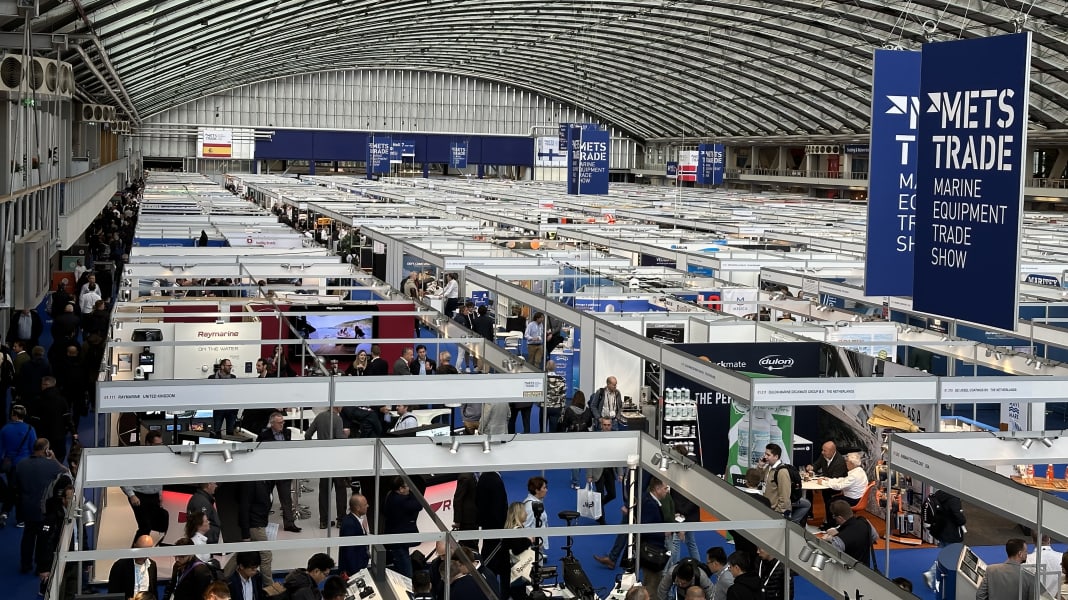
Scorkl - Mini scuba tank with compressor: Working and breathing under water
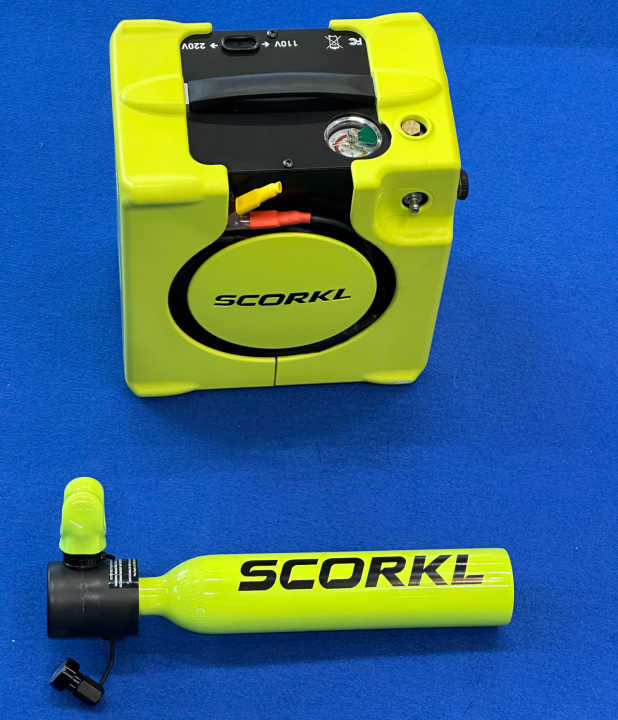
A line in the propeller, a pox on the depth sounder or an anchor wedged on a stone: Holding your breath usually doesn't get you very far. To increase the time spent underwater, super-compact scuba tanks are just the thing. However, the manufacturers often do not have a TÜV certificate, which means that the tank cannot be filled in specialised shops. No problem for divers, the small tanks can be filled using an adapter on a large scuba tank. However, if you don't have any diving equipment, the compact devices have so far been of little use. It's good if the manufacturer offers suitable pumps and compressors. As is the case with Scorkl. The Australian manufacturer offers cylinders, regulators, hand pumps and compact electric compressors for on-board use.
The bottle is so small that it can be held by mouth under water on the breathing apparatus. No harness required. With up to 200 bar of compressed air, the volume should be sufficient for around 60 breaths, which is equivalent to 10 minutes. That is significantly better than just under a minute with held air. The bottle costs 232 euros.
Scorkl offers a total of three ways to fill the scuba tank. Most users do not need to tap compressed breathing air from a large scuba tank, which means that the advantage of compact dimensions is lost. This leaves filling by hand pump. According to the manufacturer, however, this is more of an emergency solution as it takes a lot of time and effort. However, the scuba tank is rarely used on board and only in emergency situations, in which case 15 to 20 minutes of pumping are more likely to be acceptable. The hand pump comes with a filter that ensures good breathing air quality. The price is 279 euros.
The compressor is a brand new product. It can be connected to a 12-volt battery via pole terminals. The handy case measures approximately 30 x 25 x 20 centimetres and weighs 8 kilograms. Quick and effortless filling means that several dives are possible with only a short refuelling pause. A price for the compressor has not yet been set.
Navy Clic - Clic & Fill: Little helper when bunkering water
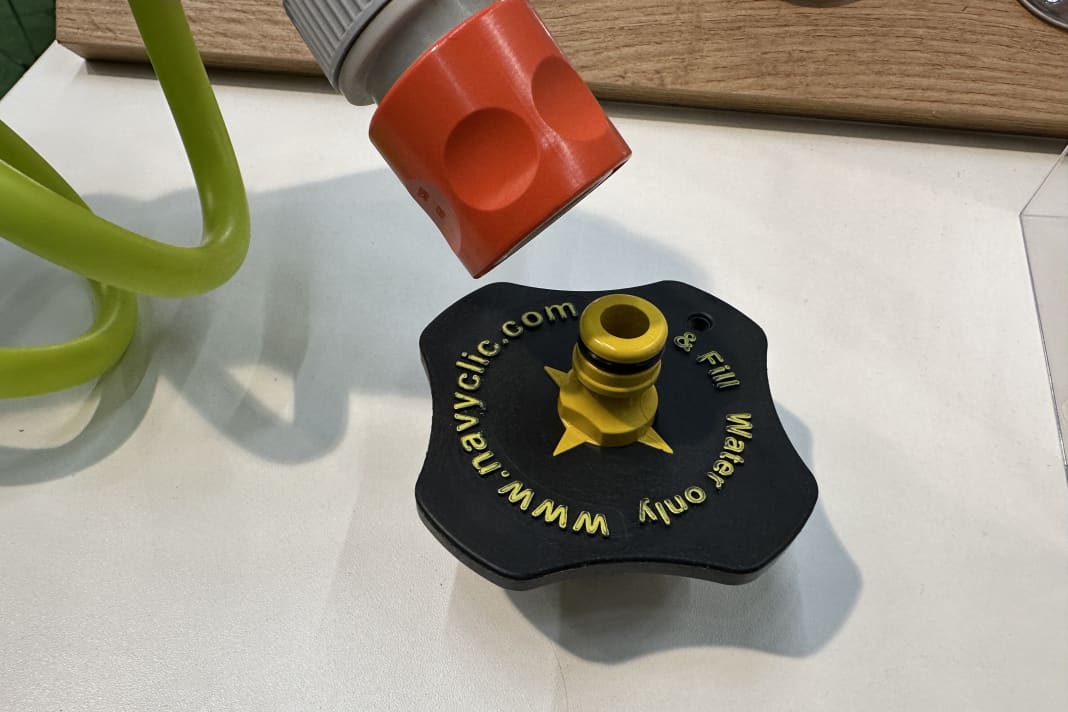



Clic & Fill from Navy Clic is practical and multifunctional. The petrol cap can be opened using the side part or the winch crank star on the back. The part is then screwed onto the tank opening using a thread. A recess has also been provided to accommodate the small chain for securing the cap so that it does not get jammed in the thread. The hose is secured using a Gardena adapter, so Clic & Fill acts like a third hand. There is no risk of the hose slipping when you turn on the water on the bar and spilling litres of water. Available in three different sizes. Price: 50 euros.
Henri Lloyd - Oilskin: All new and yet tried and tested
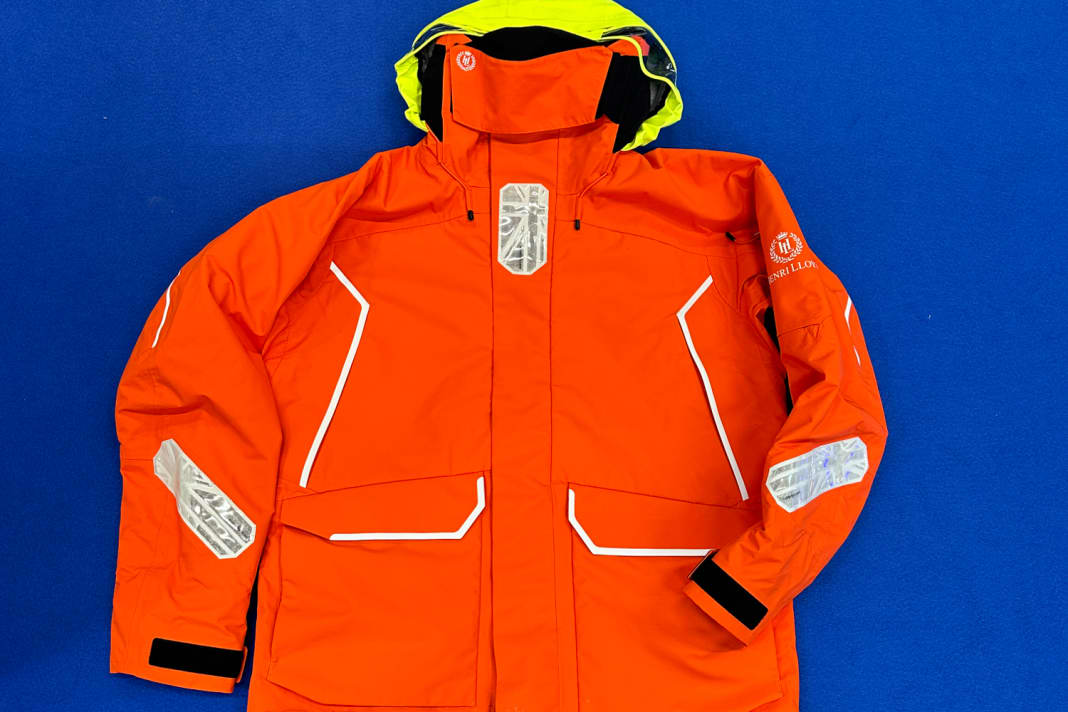



A few years ago, Henri Lloyd parted company with its dealer network in the hope of achieving more favourable prices and a larger customer base through direct online sales. The company is now selling through its dealers again and is launching new product ranges. These look retro and are actually based on popular classics from the last few decades. This also means that there are new designs behind familiar product names. All garments will be made from recycled fibres and PFC-free coatings will be used. This is the case with the Elite offshore oilskin. It offers good protection against the elements thanks to the high collar with storm flap. It also has an adjustable hood and double cuffs. Prices have not yet been finalised.
The new collection will be launched in March 2024, just in time for the sailing season. Prices have not yet been finalised.
Inmare - Ariel:Jolt dampers for more peace and quiet in the harbour
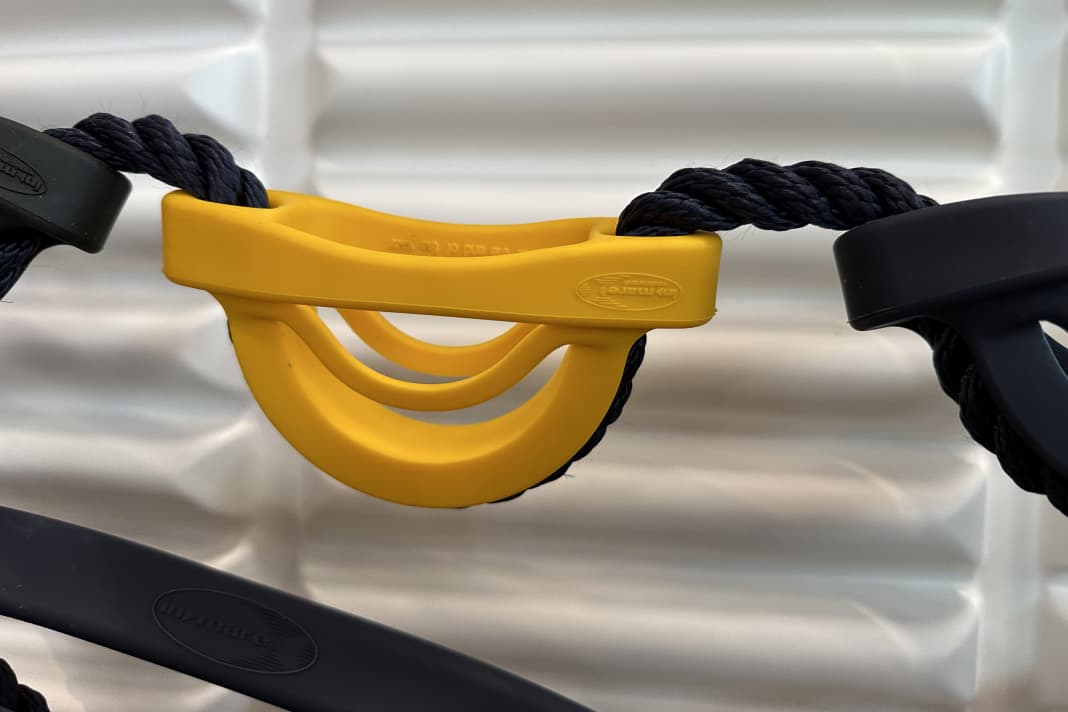



The Ariel shock absorber from Inmare is designed to do many things better. The design is intended to absorb even heavy load peaks, while the TPU used absorbs a lot of energy and lasts a particularly long time. This is also helped by its insensitivity to UV rays. The material is also particularly resistant to seawater and is designed to prevent squeaking. According to the manufacturer, it leaves no scratches or marks on the hull. Suitable for mooring lines with a diameter of 12 to 14 millimetres and boats up to 3 tonnes. Available in the colours blue and black from 22 euros.
Wescom - sMRT Shield: PLB - Get help worldwide
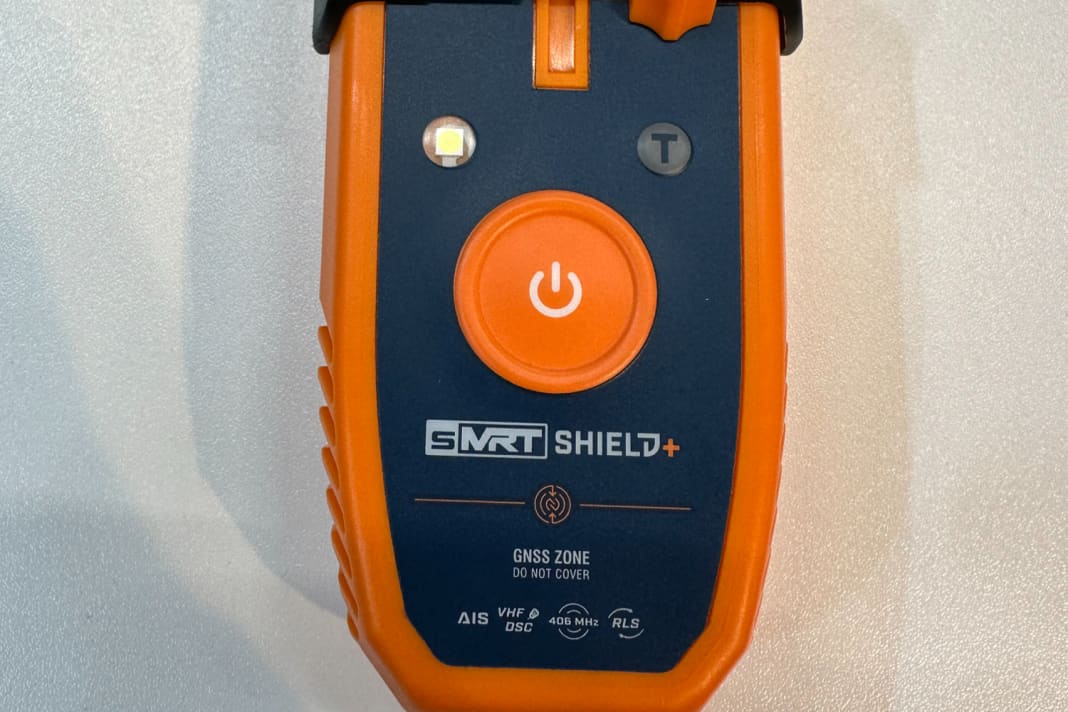



With the sMRT Shield+, Wescom offers an emergency transmitter that combines many important functions. PLB stands for Personal Locator Beacon. On the one hand, Shield+ alerts the rescue chain via satellite on the 406 megahertz frequency, but also sends a DSC distress call for ships in the vicinity and marks the person via AIS. This ensures that a rescue centre does not have to inform nearby ships if they could receive the signal directly. This should save time in an emergency. The AIS signal also makes it easier to locate a person in the water. The technology is now also installed on many pleasure craft. A return link confirms that the emergency call has actually been received. This is intended to reassure people in an emergency situation that the transmitter is really working.
Wescom offers three different sMRT variants. Shield offers alerting via satellite, return link and a homing signal on 121.5 megahertz for localisation at close range, but no AIS and no DSC distress call like Shield+. Both variants have a trigger that can be linked to the activation of the lifejacket. sMRT Alert, the third variant, is a MOB transmitter without a satellite distress call. The MOB transmitter only alerts boats in the vicinity via DSC distress call and AIS signal. The transmitter is activated manually or on contact with water. All three devices can be paired with a smartphone app. The price has not yet been set.
Ocean Signal also has a very similar product in its programme and offers the PLB3, an emergency transmitter for integration into the lifejacket. The transmitter also combines the various alarm channels, such as satellite distress calls on 406 megahertz, radio direction finding on 121.5 megahertz and AIS. In addition, a return link service informs the user of a successful emergency call. It is activated when the automatic lifejacket is triggered or manually. A flashing light is also switched on. The PLB3 can be connected to a smartphone via a wireless NFC connection. The app can be used to check the activity history, battery charge and various settings. Price: 675 euros.
Outils Ocean - Magic Rebord: Compact rescue ladder for getting back on deck
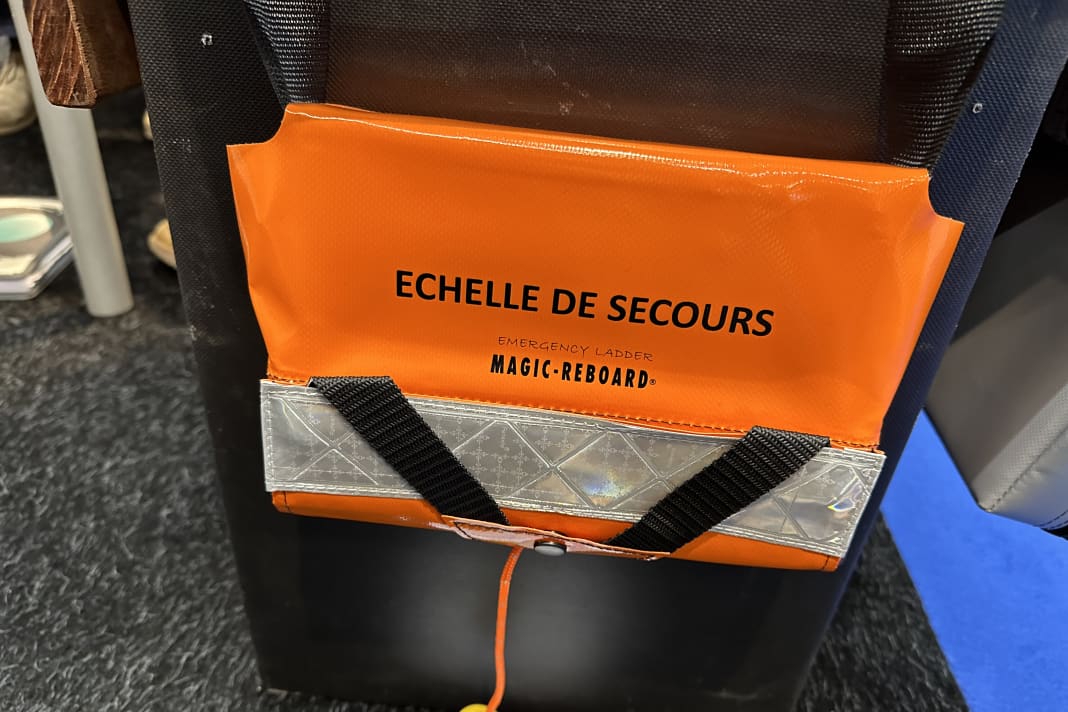



Outils Ocean has a new version of its Magic Rebord rescue ladder. The new model has significantly smaller dimensions and is now also available in the signal colour red. The steps of the rescue ladder are reinforced, which makes it easier to access compared to conventional rope ladders. The small bag is attached to the rear basket or foot rail with a loop. The flap is opened with the hanging release cord and the ladder drops down. A price has not yet been set.
Crewsaver - Exo 1.0: New lifejacket for particularly tough conditions
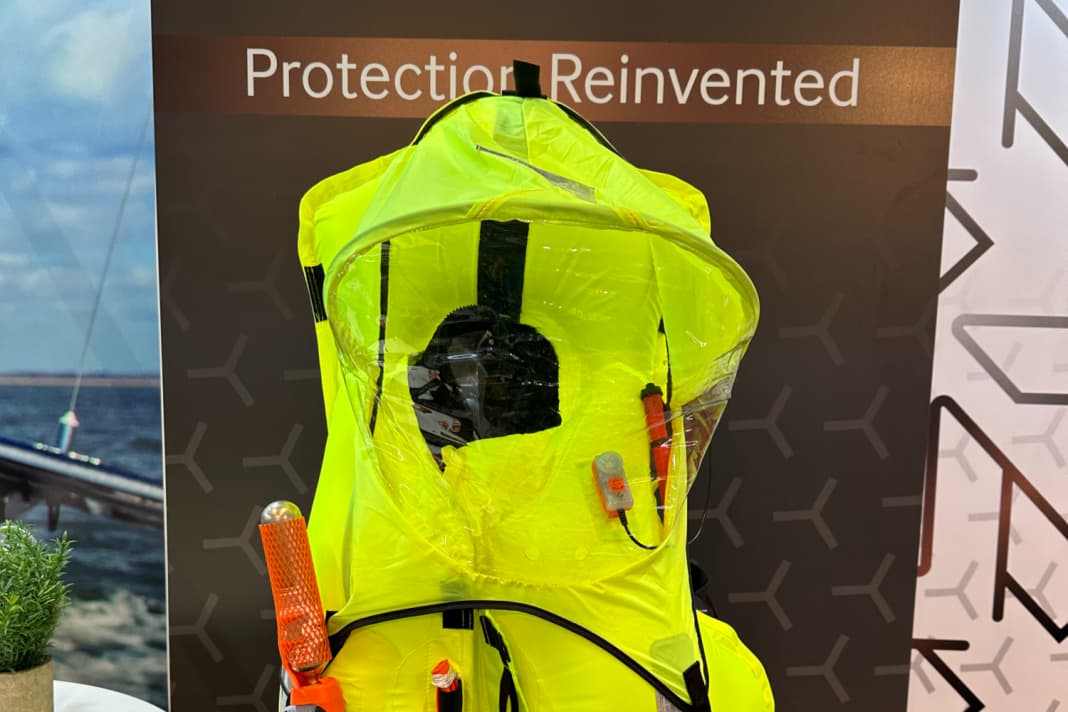


Crewsaver has a brand new lifejacket in its programme with the Exo 1.0. The 275 Newton class model is designed to provide enough buoyancy to reliably turn an unconscious person onto their back. This qualifies it for use offshore and in particularly demanding conditions.
The closure made of milled aluminium is very compact and can be opened and closed with one hand. The buoyancy chamber is asymmetrically shaped under the chin and prevents waves from finding their way into the face. There is also a spray cap with a large window that offers unrestricted visibility and leaves enough space to breathe when taut. Various loops accommodate all standard emergency transmitters.

